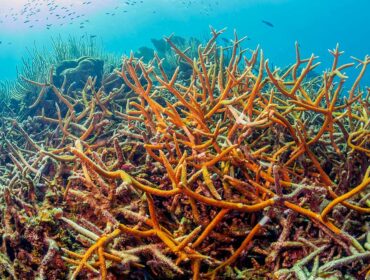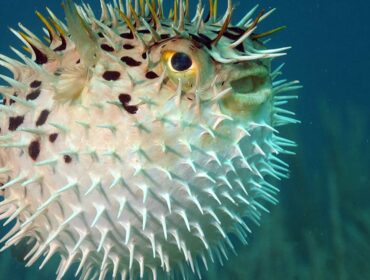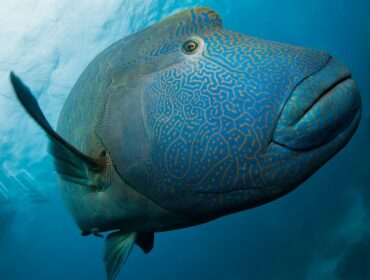Knowing and being able to identify different types of marine life, fish and coral makes scuba diving all the more exciting and enjoyable. When it comes to Coral Identification the sheer number of and different types of coral make it hard to come up with an extensive, all encompassing list. However, as part of our series of posts on marine life identification, we’ve put together a list of some common types of coral you are likely to spot when reef diving.

Sometimes mistaken for and referred to as plants or rocks, corals are actually made up of small marine invertebrate animals known as Coral Polyps and their exoskeleton structure that acts as a home. That is we see as the hard chalky structures that join together to form coral reefs. There are two main types of coral- Hard Coral and Soft Coral.
Above photo by dachalan on flickr
If you missed our first past on Hard Corals and Types of Hard Coral- CLICK HERE
SOFT CORAL
Soft corals are also composed of some rigid calcium carbonate, but it is blended with protein so it is less rigid than hard corals. These corals are “rooted,” but because they have no exoskeletons, they sway back and forth with the currents, appearing to be more like plants blowing in the breeze.
Types of Soft Coral
Gorgonian (a.k.a Sea Fans)



*photos by Skinned Mink, PacificKlaus, JennyHuang on flickr
Gorgonian: This family of soft coral is also called sea whips or sea fans. Individual tiny polyps form colonies that are normally erect, flattened, branching, and reminiscent of a fan. Others may be whiplike, bushy or even encrusting. A colony can be several feet high and across but only a few inches thick. They may be brightly colured, often purple, red, or yellow. Gorgonians are found primarily in shallow waters, though some have been found at depths of several thousand feet.[1][3] The size, shape, and appearance of the gorgonians are highly correlated with their location. The more fan-shaped and flexible gorgonians tend to populate shallower areas with strong currents, while the taller, thinner, and stiffer gorgonians can be found in deeper, calmer waters.
Carnation Coral

photo by Nemo’s great uncle on flickr
Carnation Coral (Dendronephthya): Easily one of the most beautiful soft corals in the ocean the carnation coral comes in a spectacular range of colors and flourish below underhangs and caves. They are found mostly in Indo-Pacific – Islands of the Indopacific including Fiji, Tonga, Solomon Islands and the Great Barrier Reef. Unfortunately this specimen of soft coral is extremely sensitive to changes in water chemistry and is on the decline.
Toadstool Coral

photo by Paul J. Thompson on flickr
Toadstool Coral (Sarcophyton): Also known by a host of other names like Leather Coral, Mushroom Leather Coral and Trough Coral Sacrophyton corals are found in various shades of brown, with white or gold polyps. It is difficult to identify many species because they all have the similar appearance of a mushroom or toadstool, each with a distinct stalk and capitulum (cap). As they grow older, they develop a folded appearance.
Tree Corals

photo by sarsifa on flickr
Tree Corals (family-Nephtheidae): These flowery soft corals are commonly seen on many of our shores. They are usually attached to hard surfaces including boulders, jetty pilings and coral rubble. These soft corals look like bushes. The common tissue is generally rubbery but rough to the touch. A thick ‘main trunk’ attaches to a hard surface on one end, with many small branches on the other end which is why they are referred to as Tree Coral. The Carnation Coral Dendronephthya belong to this family of soft corals.
Sea Pens

photo by CW Ye on flickr
Sea Pens (cnidarians belonging to the order Pennatulacea): Sea pens are grouped with the octocorals (“soft corals”), together with sea whips and gorgonians. They were named after their feather-like appearance reminiscent of antique quill pens. Sea pens may rise up to 2 metres (6.6 ft) in some species, such as the tall sea pen (Funiculina quadrangularis) and are sometimes brightly colored. Rarely found above depths of 10 metres (33 ft), sea pens prefer deeper waters where turbulence is less likely to uproot them.
Bubble Coral

photo by CybersamX on flickr
Bubble Coral (Plerogyra sinuosa): Bubble corals have large water filled bubbles (vesicles) covering the large sharp sepia. Found in the Pacific Ocean and parts of the Red Sea, bubble coral can be seen in varying species, colors and forms. They maintain their egg-like or rather grape like appearance during the sunlit hours, then deflate at dark, manifesting finger-tentacles that feed on plankton, etc. This type of coral is sometimes referred to as Grape or Pearl Coral and also as Bladder Coral.
Related Articles:
Understanding the Different Types of Reefs
Fish Identification Guides by Paul Humann
Marine Life Identification: Types of Shrimp
Clownfish Identification Part 1/2
Clownfish Identification Part 2/2




